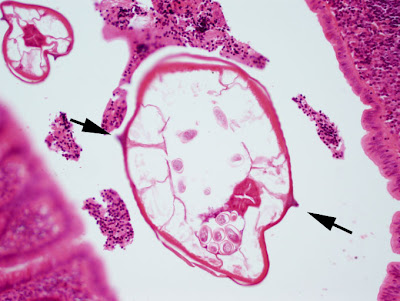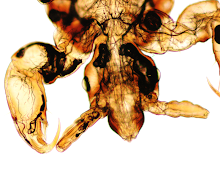Answer: crystals (urate)
Great job to everyone who got this one. Crystals in urine are a common mimic of parasite eggs. The ways to distinguish them from the real thing are as follows:
1. Parasite eggs will have internal staining structures on Pap, Giemsa, and H&E stains, whereas crystals will be colorless or only slightly pigmented.
2. Parasite eggs are uniform in size, whereas crystals will show greater size variation. In this case, the crystals were also much smaller than the
Schistosoma eggs that they mimicked.
3. Crystals will often show cracking artifacts and appear refractile.
4. Crystals will not reliably show the defining features of parasite eggs. In this case, they mimicked both
Schistosoma mansoni and
S. hematobium eggs. However, the spines were never completely characteristic. For example,
S. hematobium eggs have a spine at only 1 terminus (instead of both ends like the urate crystals shown).
Below is a true
S. hematobium egg (left) to compare to the urate crystal (right). They are shown at approximately the same magnification to highlight the difference in sizes.









